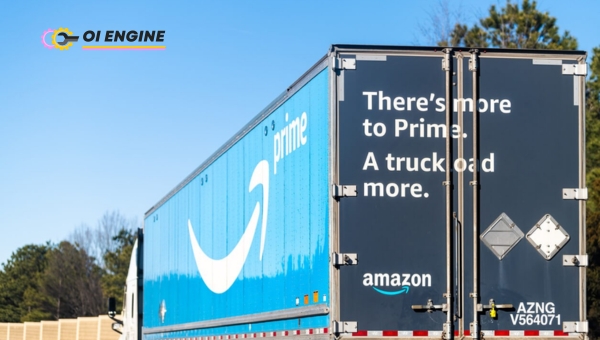Ever wondered if there’s a simpler way to hit the road with your truck and make good money without the hassle of endless negotiations? Look no further than Amazon Relay! With this game-changing service, you’re in for an easy ride as it connects truck drivers and fleet owners directly with loads.
Think about turning your wheels into real dollars, all with the tap of an app – that sounds cool, right? Get ready because I’m about to walk you through every step!
The Amazon Relay Load Board is like a matchmaker between trucks and shipments. It brings together those who need stuff moved and those doing the moving.
All through one platform – easy-peasy! Using their digital Load Board, drivers find back-to-back jobs that keep them on the move. Short-term contracts can turn into steady work, making sure that the truck keeps rolling and money keeps coming in.
Also Useful: Trucking Magazines: Discover The 20 Best Industry Reads!
What is Amazon Relay?
Amazon Relay is a system that connects truck drivers and businesses. It’s like a meet-up spot online where drivers can find loads to transport and companies can make sure their goods reach customers.
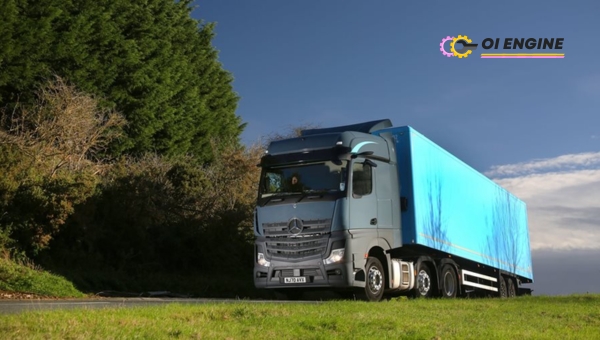
Think of it as a bridge linking those who have items to ship with those who have the space on their trucks to carry them.
This program uses technology to simplify how trucks are filled with cargo. It helps avoid empty trucks on the road which is good for both businesses and drivers.
If you’re a driver, it means you won’t waste fuel or time. And if you’re a business, your products move quickly without hassle.
The Purpose of Amazon Relay
The main goal of Amazon Relay is to make sure everything works smoothly in shipping jobs. Here’s how Amazon makes this happen:
- Quick Connections: The service connects truck owners with loads fast so they spend less time waiting.
- Loads for Everyone: Whether you’ve got a big truck or a small one, there are tasks for all sizes.
- Simple To Use: Their app guides you step by step making it easy even if tech isn’t your thing.
- Less Guesswork: They give clear details about each job so drivers know what to expect.
- Steady Work: For those looking for regular jobs, Amazon Relay provides frequent opportunities.
By focusing on these points, they create an organized system that benefits both shippers and carriers. This organization helps keep things moving along smoothly without any surprises, which in turn makes everyone’s day-to-day work that much easier.
How does Amazon Relay Work?
If you’ve ever wondered how Amazon manages to deliver an impressive number of packages daily, the answer is quite innovative: Amazon Relay.
This logistics application works as a bridge between truck owners or drivers and shipment assignments from Amazon. There’s plenty more to its working than just that, of course, and a deeper look reveals some truly intriguing aspects.
The Role of Load Board in Amazon Relay
The heart of the Amazon Relay application is its Load Board feature. Here’s why it’s so important:
- Streamlining Assignments: It functions as an organized marketplace where loads are posted for truck owners or drivers to claim.
- Real-time Updates: The Load Board provides real-time information about available loads, making it easier for drivers to pick assignments matching their preferences.
- Increased Efficiency: It allows truck drivers or owners to plan better by seeing upcoming consignments weeks ahead of time.
- Eliminating Guesswork: With the Load Board’s transparency and direct communication with dispatchers, there are fewer miscommunications relating to the next assignment.
- Control & Autonomy: Drivers get complete control over what type of load they want to haul and when they want their schedules.
Short-term Contracts and Opportunities with Amazon Relay
Amazon Relay isn’t just about long-haul assignments; numerous short-term contracts offer an additional source of income and flexibility.
For instance, you might find assignments that fit perfectly into your schedule or fit well between other, longer routes you have.
Amazon knows that diversifying opportunities creates a win-win situation for both them and the drivers. Hence, they ensure a steady stream of varied work opportunities helping you to maintain a consistent workload.
How Posting a Truck in Amazon Relay Works?
Conventional logistics models befit large fleets but not so much for independent truck owners or drivers – and that’s where Amazon Relay flips the script.
By simply posting their truck availability hours in advance on the app, drivers can communicate directly with dispatchers about potential loads.
The result is amazing — it takes entity sizes out of the equation altogether! Big or small – everyone gets equal opportunity.
Regardless of whether you’re an owner-operator with one truck or running a fleet operation, Amazon Relay recognizes value based on efficiency and not exactly scale! It can thus provide a level playing field going well beyond conventional brokerage systems.
From transparency over pick-up times to load types and delivery schedules – everything’s out there for your consideration before even committing to any duty!
If autonomy is something you value as an owner-driver, then posting your availability on Amazon Relay Load Board wouldn’t just change how you operate; it could also transform how much take-home pay you end up with every week!
Starting with Amazon Relay
Beginning your journey with Amazon Relay involves quite a straightforward process. It sets the stage for a partnership where businesses can easily take advantage of Amazon’s vast logistics network to realize their shipment needs. Let’s dive into how you can get started.
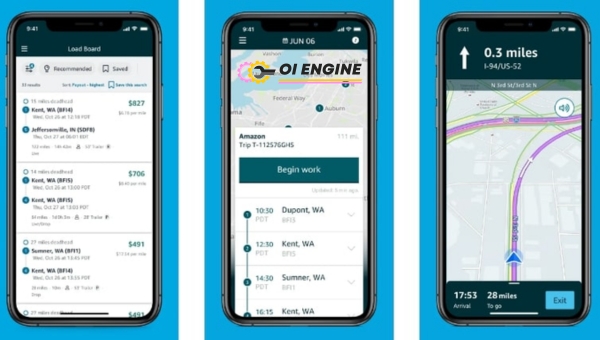
Downloading the Amazon App – Where it All Begins
Your first step into utilizing the services of Amazon Relay starts by downloading its dedicated app, available on both Apple and Google Play stores.
After finding it in your respective store using a simple search, hit download and patiently wait for it to install on your device. Upon completion of installation, launching the app presents an interface that is both user-friendly and intuitive even for beginners in technology or business owners who typically prefer traditional methods over digital advances.
This is where everything related to your dealings with Amazon Relay is handled; so familiarize yourself with every control, function, and feature found within the app.
Creating an Account with Ease
Once you’ve mastered navigating through the app, creating an account comes next in line. No need to worry about lengthy or complicated sign-up procedures; just simply tap on the “sign up” button and follow along as prompted.
You’ll be asked for some basic information such as name, e-mail address, and password along with a few other details pertinent to running a shipping business type of carrier (Power Only / Traditional), Motor Carrier (MC) Number among others which will form your profile – so you must fill out all fields accurately.
Submitting your Information
The next big step after creating an account constitutes submitting the necessary documentation required by the Amazon team primarily aimed at ensuring compliance with regulatory standards governing the shipping industry such as commercial driving licenses, vehicle insurance documents, etc., among other relevant legal records required to run legit operations. Daunting this phase may seem initially due to its focus on paperwork; worry not!
There’s no rush – you have ample time to submit each document at your convenience after creating your account, and a systematic guide within the app ensures you are never confused about what’s needed next. Following these steps can lay a strong foundation for you to start your journeys on Amazon Relay.
What are The Different Types of Loads on Amazon Relay?
In the world of freight transportation, various types of loads are often referred to. As you venture into partnering with Amazon Relay.
It’s crucial to that these load types because each type has its unique characteristics in structure and operation. The different loads typically include Full Truckload, Less-than-Truckload, and Intermodal.
Full Truckload
Full Truckload or FTL is a common term used in freight transport. When I say FTL in Amazon relay terminology, it means that the entire truck is occupied by one shipment belonging to one customer only.
This method is usually practical when my shipment is large enough to fill an entire truck OR when the owner doesn’t want his goods being shipped with other shipments due to certain reasons like potential damage or contamination.
For instance, if I’m shipping a large quantity of furniture across the country for a single client who requested exclusive use of the truck space – that’s a Full Truckload. Certain benefits come with FTL transportation:
- Less handling: Since your goods don’t need to be moved on and off between trucks for different deliveries along the route.
- Faster delivery: There are no intermediate stops to deliver other consignments.
- Better security: It decreases any chance of damage as less handling results in fewer risks.
Less-than-Truckload
Opposite from Full Truck Load shipments, we have another category commonly known as Less-than-Truck Load (LTL).
In simple words—in LTL mode—different shippers share space on the same truck for their smaller freights; thus helping them save costs significantly through shared space shipping.
Now imagine transporting some boxes of books from one warehouse to another which isn’t enough to fill a whole truck nor cost-effective if you do so.
Here comes LTL into play where your shipment shares truck space with others’. Just like FTL even LTL carries its pros:
- Cost-effectiveness: Since you’re paying only for the space your shipment takes up.
- Flexibility: With LTL, you’re not limited by the size of your shipment and can ship any quantity without worrying about the cost of a full truck.
Apart from these two major types, there’s another specialized load type in Amazon Relay—Intermodal.
The freight transportation industry isn’t one-size-fits-all. These load types will help you effectively decide which to use based on your shipment size, budget, and other specific requirements making you get the most out of Amazon Relay’s services.
Also Related: Top 10 Truck Stops Directory
What are the Pros of Partnering with Amazon Relay?
No doubt partnering with Amazon Relay gives you multiple benefits. It’s a partnership that offers numerous attractive perks, designed to make the lives of truck owners, drivers, and carriers easier and more rewarding.
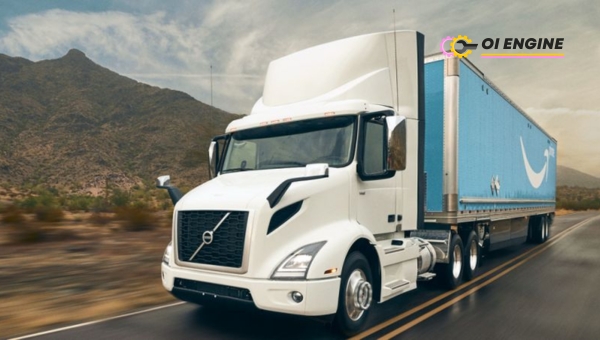
Payment Expediency
One of the most attractive benefits Amazon Relay presents is its swift payment process. For those who have experience in the trucking industry, it’s common knowledge that waiting for payments can feel like forever.
Well, Amazon Relay eliminates this worry. Payments for services rendered are often in my account within a week or even less after delivery is made.
This prompt compensation structure means you don’t have to worry about cash flow issues or wait longer than necessary before you receive your hard-earned money.
Besides quick payment processing, another awesome feature is their transparent pricing model. You see your earnings before accepting any load. No guesswork or tutorials are required; it’s immediate transparency for immediate decision-making.
Constant Demand
Another key advantage of partnering with Amazon Relay is the constant demand for services. Being owned by arguably the world’s largest e-commerce company, there’s practically an endless supply of goods to be delivered all year round!
As a partner driver or carrier company, this allows me tons of opportunities to earn consistently without going through low seasons or drop-offs typical in regular freight movement businesses.
Plus Amazon has a variety of warehouses scattered all over the place resulting in widespread coverage and greater service demands which translates into more loads for us drivers.
No Minimum Load Requirements
Contrary to some other load board providers that may require you to commit specific volumes month-on-month before qualifying for logistics jobs – nothing like that happens here on Amazon Relay!
Irrespective of whether I am a small operator with just one truck under my control or a conglomerate handling multiple transportation assets simultaneously – both scenarios have an equal chance at hauling for Amazon.
This essentially means that I dictate my pace. I determine how often and how much work I handle, providing the flexibility needed to juggle other aspects of life without worrying about irredeemable commitments or unreachable minimal load requirements.
On Demand Navigation Assistance
In our line of work, knowing where you are heading is half the battle won. Amazon Relay enhances this by offering an on-demand navigation assistance feature on their mobile app which makes delivery routes extra easy to navigate.
This smart feature not only provides turn-by-turn voice guidance but also helps optimize all your truck-approved routes ensuring you apply the fastest, safest, and most efficient paths to your destination.
It goes beyond ensuring you have a seamless driving experience; it also takes cognizance of potential hurdles en route like low bridges, weight limitations, or suspect terrains to dodge unforeseen issues on your drive.
This ease can’t be over-emphasized as it saves me time, reduces stress, and increases efficiency – resulting in better productivity and profitability.
What are the Cons of Associating With Amazon Relay?
While associating with the Amazon Relay does bring its benefits, it’s important to know some downsides before plunging headfirst.
This knowledge empowers you to make an informed decision, weighing the pros against the cons. Despite the ease and conveniences Amazon Relay presents, perceptions might drastically change once a few specific challenges start to surface. So, let’s explore these challenge areas.
Higher Percentage Of Night Runs
One major challenge faced by drivers and carriers in working with Amazon Relay is the higher percentage of night runs. Driving at night introduces several elements that can increase risk.
The sight is limited because of darkness which may cause difficulty navigating in unfamiliar areas. Also, it carries increased risks due to traffic irregularity and fatigue.
Moreover, regular night driving can throw off your body’s internal clock and could lead to sleep disorders which might impact overall health if not addressed promptly.
While nighttime assignments can be profitable due to lower traffic and efficient assignment completion, they require careful consideration as they directly affect the driver’s well-being.
More Than Average Requirements
Joining hands with Amazon Relay also means fulfilling more than average requirements expected from partners compared to other load board services in terms of vehicle specification and employee qualifications.’
Crossing this hurdle may need more substantial investment upfront for both equipment upgrades as well as additional qualifications or experience that qualify an individual for the role within this platform.
The quality expectations set by Amazon are higher and knowledge so they aim for customer satisfaction through seamless service delivery with highly competent resources partnered with a well-maintained vehicle fleet.
Not meeting these requirements wouldn’t allow setting up a partnership making it a daunting challenge for potential partners especially when initial investment capability is a concern or relevant experience accumulation takes time.
Unpacking Average Pay Rates In The Industry
Finally, there exist concerns regarding average pay rates when comparing Amazon Relay payouts against industry standards.
Now, although the notion is that partnering with a behemoth like Amazon might bring exceptional earnings, the reality could be contrasting in many cases.
Different regions and varying demands frequently shift pay rates, which causes some unpredictability in earnings. This adds another layer of challenge to predict consistent income generation which is often a crucial determining factor for anyone contemplating associating themselves with Amazon Relay.
Despite reliable workload availability throughout the year, if per job payout doesn’t match industry norms it could deter several potential partners from engaging with this platform.
Satisfying Prerequisites For Operating With Amazon Relay
Before actively participating in the Amazon Relay system, several prerequisites must be satisfied. These include carrier requirements, complying with insurance requirements, and possessing qualifying vehicles. Let’s delve into these considerations in detail.
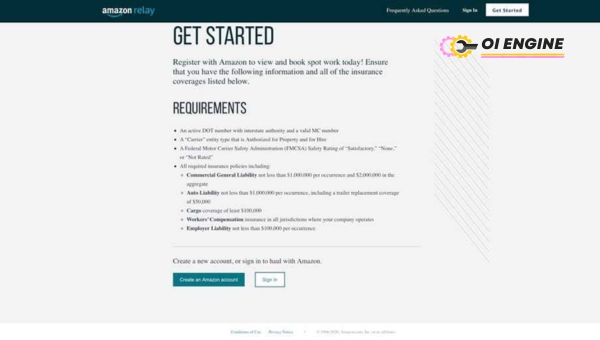
the Carrier Requirements
First of all, as a truck owner or driver interested in working with Amazon Relay, it’s essential to understand the carrier requirements set forth.
Amazon requires every carrier to have an active profile on their system. This means you need to create a company profile via their website or app and submit all necessary documents for approval – such as DOT/MC authority letter and W9 forms.
Things may seem complicated at first glance but rest assured that Amazon has laid out its criteria quite clearly for everyone’s benefit.
Moreover, maintaining a satisfactory safety record is also crucial because Amazon takes its contract partners’ security policies very seriously.
It might seem like there are loads of boxes you need to tick off on this checklist before getting started with Amazon Relay; these steps ensure both your business and your drivers are protected from any possible complications down the road.
Deciphering The Insurance Requirements
Insurance is always essential for transportation services”, and working with Amazon Relay is no exception. Before signing up for handling loads through this service provider – comprehensive commercial auto liability insurance is required.”.
It delivers peace of mind knowing you’re covered if something should go wrong during a delivery run.
Besides general issues like frequency of accidents or violations etc., insurance also covers specific issues like lost packages amongst other things.
So while you might feel overwhelmed by the sound of it now remember that having good coverage isn’t just about protecting yourself – it’s about building trust between your service and clients too– which matters a lot when working under famous names like “Amazon”.
Qualified Vehicles And Trailers Needed for Amazon Relay Service
When it comes to vehicles, Amazon Relay has detailed requirements. For your vehicle to be eligible, it must satisfy the prescribed criteria.
For instance, single-axle tractors with a gross vehicle weight rating (GVWR) of 33,000 lbs and double-axle tractors with a GVWR of 80,000 lbs are some examples.
It is also important to know that in terms of trailers – dry vans or refrigerated box types are usually accepted. You need to carefully analyze whether the types of loads being offered by Amazon align with what your vehicle or trailer can accommodate.
Determining Driver’s Role
The role played by drivers is vital in every logistic operation and Amazon Relay acknowledges this fact quite openly.
As a driver associated with Amazon Relay – you’re expected not only to deliver packages on time but also to maintain professional conduct throughout your employment tenure.
Your responsibilities may range from managing routes effectively using GPS navigation through rigorous checking and proofing consignment papers for accuracy.
It can be challenging at times because the work is demanding; nonetheless, remember that every delivery job completed satisfactorily contributes towards building stronger customer relationships which eventually reflect positively on your reputation as well as earnings!
Determining Your Earnings Through Amazon Relay
When considering working with the Amazon Relay program, one of the most critical questions that come to mind is about the financial side of things.
Your potential earnings through this platform are vital as it directly impact whether or not Amazon Relay presents a profitable opportunity for you.
How Much Do Amazon Relay Loads Pay?
Amazon Relay offers competitive pay rates designed to attract experienced and dedicated drivers. These rates fluctuate regularly based on diverse factors including the load type, distance covered, and current market trends in freight transportation.
You need to know that there can be variations in the actual take-home payment once operational expenses are considered.
- By Load Type: The payments differ significantly across Full Truckload (FTL), Less-than-Truckload (LTL), and Intermodal loads. In most cases, FTLs pay more due to their larger size and scope.
- By Distance: Longer routes typically entail higher payments as they demand additional resources like fuel and time from drivers.
- Considering Operational Costs: While looking at the advertised rates can give an optimistic picture about potential earnings, realistically it’s crucial not to ignore associated costs such as maintenance fees for your vehicle, fuel charges taxes, etc.
The bottom line when exploring how much Amazon Relay loads pay isn’t just about finding out those dollar numbers but understanding what determines these figures.
Doing so equips you with comprehensive insights hence allowing you smarter decision-making on various aspects—be it selecting suitable types of loads or planning out long-distance trips effectively.
Also Check: Do Mechanics Need CDL? Essential Licensing Guide
FAQs
Is Amazon Relay a load board?
Yes, Amazon Relay is essentially a load board. It is an efficient tool provided by Amazon to facilitate carriers and truck owners in finding and managing loads from various shippers across the network.
How much does Amazon Relay pay per load?
The pay per load varies depending on factors like the type of haul, distance, and other contractual conditions. On average, it may range from $1.21 to $3.09 per mile.
What size box truck is needed for Amazon Relay?
Amazon requires you to have a box truck that’s 53 feet long. This provides enough capacity for loading products effectively, ensuring optimum transportation efficiency.
Does Amazon Relay pay daily?
No, while payments are promptly processed within seven days through direct deposit post-delivery proof submission, it doesn’t offer daily payments.
Conclusion
Amazon Relay offers exceptional opportunities to carriers, providing an efficient and straightforward platform for load management.
It opens doors for short-term contracts and extended commercial relations. Even though it comes with unique challenges, such as higher night runs and above-average requirements, comprehending its load board operations will pave the path toward maximizing profits.
Before onboarding on this journey, the prerequisites including carrier requirements, insurance needs and vehicle qualifications are crucial.
This dynamic platform holds enormous potential by playing a role in determining your earnings via full truckload, less-than-truckload, and intermodal load types.
